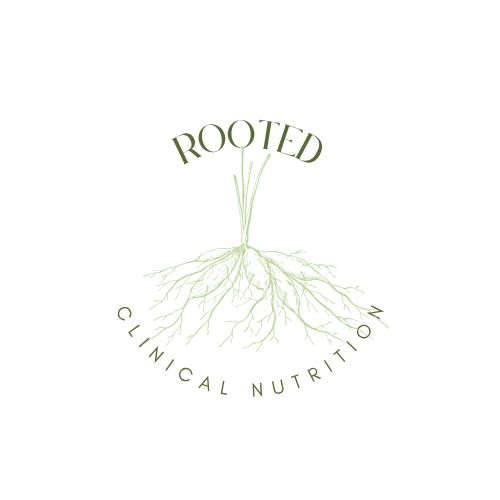Meeting the Organic Standard
Quality vs. Marketing
In 2023, food prices increased by 5.8% and many consumers are taking notice of increasingly high grocery bills. Health and wellness initiatives are also more prominent than ever before as people want to remain healthy and achieve optimal wellness. Health conscious consumers often choose organically grown and sourced ingredients and food items, even if they are more expensive. In today’s economic climate with rising costs of many consumer products, including grocery store prices, it’s important to understand the difference between organically sourced food items and marketing schemes. Since foods labeled as “organic” are often more expensive, we want to make sure what we’re paying for meets the organic standard.
Certified Organic
Looking around the grocery store you may see popular buzz words like “free range,” “grass fed,” and “all natural,” but this does not mean those foods are organic. What are the requirements for an organic certification label? First, you will see a USDA Organic certification seal on the item. This label will either mean that the item is 100% organic or 95% organic. 100% organic items meet the following requirements:
Certified USDA seal, 100% certified organic ingredients and processing, no GMOs, all ingredients comply with National List of Allowed and Prohibited Substances and are certified through the USDA.
Brands will often market food items with key buzzwords that sound natural or organic enough but do not meet the requirements to be certified organic. These items will also carry the same price tag as true certified organic options so it is important to read labels if buying organic to get what you are paying for.
Health Benefits of Organic Foods
Many consumers are under the impression that organic food items are healthier than their non-organic counterparts. There is evidence-based research to back up this claim, however it’s important to remember more research is needed to determine true measurable health benefits. Longitudinal observational studies have shown that consuming organic foods reduced risk of developing metabolic syndrome, high BMI, non-Hodgkin lymphoma, infertility, birth defects, allergic sensitization, otitis media and pre-eclampsia. Again, it is important to remember that those consuming organic foods are often consuming healthier diets in general and include healthy lifestyle factors that can influence these results. Another study showed evidence that organic foods contain significantly higher levels of certain nutrients, including vitamin C, iron and magnesium which can have positive health outcomes. Research has also suggested that food across the world is becoming poorer and poorer when it comes to nutritional value due to high yield crops and unsustainable farming practices.
The Choice is Yours
Organic foods have been shown to have higher nutritional value as well as less exposure to pesticides. Consumers interested in eating organically grown or sourced food should pay attention to food labels to ensure that the product is 100% certified organic. Familiarizing oneself with the USDA National Organic Program’s certification requirements and labels will give consumers a better understanding in how to determine product quality. More research is needed to truly understand the health benefits of an organic diet vs. a non-organic diet but the literature has shown positive health outcomes. For those new to shopping organic or those with budget restrictions, consider shopping by the “dirty dozen” list. The produce items on the dirty dozen list have been contaminated with harmful pesticides. Organically grown produce found on this list will not be treated with harmful pesticides.
-
1. Spinach
2. Strawberries
3. Kale, Collard, and Mustard Greens
4. Grapes
5. Peaches
6. Cherries
7. Nectarines
8. Pears
9. Apples
10. Blackberries
11. Blueberries
12. Potatoes
References:
Image. The Organic Seal. Agricultural Marketing Service U.S Department of Agriculture. https://www.ams.usda.gov/rules-regulations/organic/organic-seal
Summary findings. Economic Research Service U.S. Department of Agriculture. Updated April 25, 2024. Accessed May 19, 2024. https://www.ers.usda.gov/data-products/food-price-outlook/summary-findings/
Ross, K. Organic Foods, Pesticides and GMOs. Recorded Lecture. SonoranInstructure. Accessed May 19, 2024. https://scnm.hosted.panopto.com/Panopto/Pages/Viewer.aspx?id=0870d54b-ba01-4d8d-99a8-abdd0162bc0c&start=2.751306.
Organic labels explained. (PNG). United States Department of Agriculture. (April, 2018). https://www.ams.usda.gov/sites/default/files/media/OrganicLabelsExplained.png
Vigar V, Myers S, Oliver C, Arellano J, Robinson S, Leifert C. A systematic review of organic versus conventional food consumption: is there a measurable benefit on human health? Nutrients. 2019;12(1):7. Published 2019 Dec 18. doi:10.3390/nu12010007
Rahman A, Baharlouei P, Koh EHY, et al. A comprehensive analysis of organic food: evaluating nutritional value and impact on human health. Foods. 2024;13(2):208. Published 2024 Jan 9. doi:10.3390/foods13020208
Bhardwaj RL, Parashar A, Parewa HP, Vyas L. An alarming decline in the nutritional quality of foods: the biggest challenge for future generations' health. Foods. 2024;13(6):877. Published 2024 Mar 14. doi:10.3390/foods13060877
The 2025 Dirty Dozen. Environmental Working Group’s Shopper’s Guide to Pesticides in Produce. 2025. Accessed June 29, 2025. https://www.ewg.org/foodnews/dirty-dozen.php

